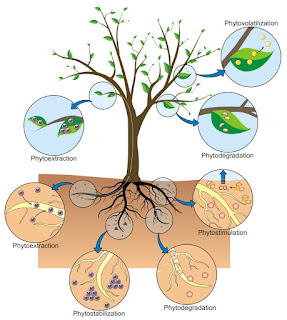Phytoremediation of explosive

Phytoremediation is one of the best technique to use plants to get rid of hazardous chemicals. Scientists, working on stress biology, are trying to discover the underlyinmolecular mechanism and candidate genes to engineer plants against different heavy metals and hazardous components. For example, explosive like 2,4,6-trinitrotoluene (TNT) is a worldwide pollutant, contaminating manufacturing waste sites, mines, current and former conflict zones, and military land. The U.S. Department of Defense has an estimated 10 million hectares of operational ranges contaminated with munitions constituents and rated as a class C carcinogen by the Environmental Protection Agency. TNT has toxic effects on all living organisms: in animals, causing hepatitis, anemia, hyperplasia of bone marrow, and cataracts, and in soil, severely affecting microbial diversity and the establishment of vegetation. In plants, the majority of TNT remains in the roots, where growth and development is inhibited, red
